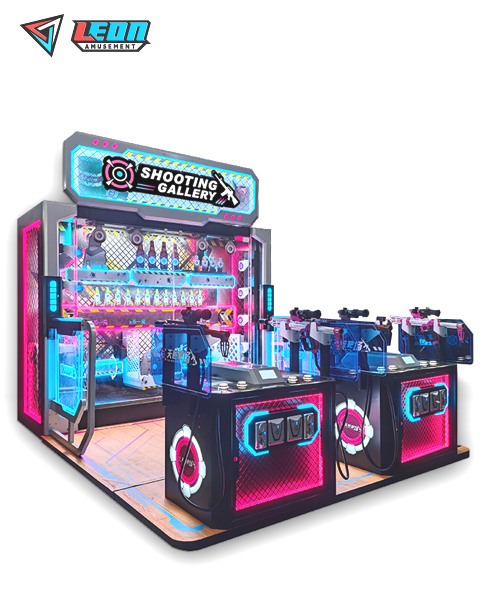The revenue of claw machines and arcade game machines mainly depends on foot traffic and game settings. A claw machine that serves 100 people daily, charging 2 yuan per play, can generate monthly revenue of 6000 to 12000 yuan. An arcade game machine serving 80 people daily, charging 3 yuan per play, can generate monthly revenue of about 7200 to 14400 yuan. By adjusting the game difficulty and reward mechanism, revenue can be further increased.
Table of Contents
ToggleRevenue Analysis of Claw Machines
The purchase price of claw machines varies depending on brand, functionality, and configuration. Basic models usually cost between 3000 yuan and 5000 yuan, while high-end models with advanced features like intelligent grip adjustment, music, and lighting effects can cost between 8000 yuan and 15000 yuan. The durability of the machine directly impacts its long-term operating costs, with high-quality machines typically having a longer lifespan and lower maintenance frequency, further reducing long-term costs.
In addition to the purchase cost, daily operating costs are also important to consider. The daily operating costs of claw machines mainly include electricity, doll procurement costs, and venue rent. A claw machine with a power rating of 150W running for 10 hours a day will incur a monthly electricity cost of about 45 to 60 yuan. The procurement cost of dolls varies depending on quality and brand, averaging between 5 yuan and 20 yuan per doll. Assuming 60 dolls are replaced monthly, the procurement cost will be between 300 yuan and 1200 yuan. Venue rent varies according to location and foot traffic, typically ranging from 50 yuan to 300 yuan per square meter per month.

The revenue model of claw machines relies mainly on high foot traffic and the setting of game difficulty. Assuming a claw machine serves 100 people daily, with each person attempting 3 times on average, charging 2 yuan per play, daily revenue would be 600 yuan, totaling 18000 yuan per month. If the success rate is set low, Between 10% and 20%, operators can maximize profits while maintaining player satisfaction. Studies have shown that adjusting the difficulty, regularly changing the types and themes of dolls, and adding time-limited promotions can effectively increase player engagement and repeat visits.
The main consumers of claw machines are teenagers, couples, and families. They are usually located in shopping malls, cinemas, amusement parks, and other high-traffic locations. Foot traffic is one of the key factors affecting revenue. Studies have shown that weekend foot traffic in shopping centers is 40% to 50% higher than on weekdays, meaning that claw machine revenue may double on weekends and holidays. Additionally, by adding holiday-themed dolls or launching time-limited events before holidays, claw machine revenue can be significantly increased.
Revenue Analysis of Arcade Game Machines
The initial investment in arcade game machines is relatively high, ranging from 10000 yuan to 30000 yuan depending on the type of game (e.g., racing, fighting, shooting). High-end arcade machines, such as large-scale racing games with multiplayer capabilities, can cost over 50000 yuan. Although the purchase cost is high, arcade game machines typically have a long lifespan and relatively low maintenance costs. Generally, monthly maintenance costs range from 100 yuan to 500 yuan, mainly for replacing parts and routine maintenance.
The revenue of arcade game machines largely depends on their market positioning and player loyalty. Racing and shooting games, due to their high interactivity and competitiveness, often attract many loyal players. These players tend to have high repeat consumption rates, effectively increasing machine usage. Additionally, some machines have leaderboards or point systems, encouraging competition among players, further enhancing their willingness to spend.
The revenue from arcade game machines comes not only from direct game coin income but also from auxiliary income. Through in-game advertising, joint prize promotions, and membership point systems, arcade machines can earn additional income. Moreover, with the widespread use of electronic payments, many arcade machines have also introduced QR code payment features, allowing players to pay conveniently without relying on game coins, thereby increasing overall revenue.
Like claw machines, the revenue of arcade game machines is also highly dependent on foot traffic. Arcade game machines are suitable for shopping malls, cinemas, game centers, and other high-traffic locations, especially in areas targeting young people. Entertainment centers near campuses or youth activity centers are ideal locations for arcade game machines, as player engagement is usually high and spending power is strong. Additionally, arcade machines are also suitable for placement in bars or restaurants as an added entertainment option, attracting customers to stay longer and increasing their spending.

Overall Revenue Estimate
Assuming the entertainment venue is in a medium-sized shopping center with a daily foot traffic of 5000 people, about 10% of them will participate in the entertainment activities of claw machines and arcade game machines. Based on the previous estimates of single machine revenue, the total monthly revenue of 10 claw machines can reach 120000 yuan, and the monthly revenue of 5 arcade game machines can reach 72000 yuan, totaling 192000 yuan in monthly revenue.
Considering the venue rent, electricity costs, maintenance costs, and doll procurement costs, the total monthly operating costs are approximately 30000 yuan to 50000 yuan. Thus, the monthly net profit can reach 142000 yuan to 162000 yuan. If the operator can further increase foot traffic and player loyalty through reasonable management, promotional activities, and equipment upgrades, the monthly net profit can even exceed 200000 yuan.
Typically, the payback period for claw machines is 3 to 6 months, while for arcade game machines, it is 6 to 12 months. Given that the equipment’s lifespan is usually between 3 and 5 years, the long-term revenue from the equipment is considerable after deducting daily maintenance costs. Additionally, by increasing the number of machines, expanding the venue, or introducing new types of entertainment equipment, operators can further enhance overall profitability.








